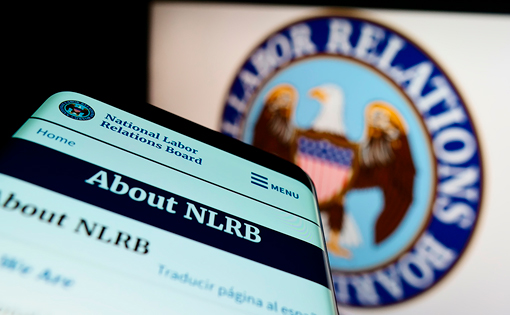BY AMY COOLEY
Many operators in the chauffeured car industry began as one-person shows: they drove, answered phones, and promoted their companies by themselves. As business took off, these operators were able to bring on staff, such as chauffeurs and CSRs. While this kind of growth is great, it comes with new responsibilities.
 For the entrepreneur, family-owned operation, or small business owner, the idea of becoming “an employer” can be daunting. Having employees generates the need for employment and workplace policies ranging from safety to payroll practices to standards of behavior and beyond. There is significant legislation and guidance at federal and often state and local levels that affect how your policies should be written, and how they can or cannot be enforced. In the best cases, solidly written and appropriately enforced policies can provide a framework for a thriving work environment. In the worst cases, non-compliant, poorly written, or unevenly enforced policies can lead to legal trouble—including fines, censure, and lawsuits.
For the entrepreneur, family-owned operation, or small business owner, the idea of becoming “an employer” can be daunting. Having employees generates the need for employment and workplace policies ranging from safety to payroll practices to standards of behavior and beyond. There is significant legislation and guidance at federal and often state and local levels that affect how your policies should be written, and how they can or cannot be enforced. In the best cases, solidly written and appropriately enforced policies can provide a framework for a thriving work environment. In the worst cases, non-compliant, poorly written, or unevenly enforced policies can lead to legal trouble—including fines, censure, and lawsuits.
If you’ve been at this for a while, or if you follow a lot of business and HR news, you might already be aware of the current trend toward additional scrutiny of workplace policies related to the National Labor Relations Act (NLRA). Enacted in 1935, the NLRA was designed to protect workers’ rights to organize, bargain collectively, and engage in concerted activities without interference from employers. Here, we will take a little dive into the influence of the NLRA on handbooks and policies, and some particular policies that are getting extra attention from the National Labor Relations Board (NRLB).
Section 7 of the NLRA guarantees employees the right to engage in “concerted activities for the purpose of collective bargaining or other mutual aid or protection.” Concerted activities involve two key elements:
1. Concerted action: The activity must involve two or more employees acting together, or it could involve an individual employee acting on behalf of a group of employees. It doesn’t necessarily mean that all employees need to be directly involved; an employee could be speaking on behalf of coworkers.
2. Mutual aid and protection: The activity must be related to the employees’ working conditions, wages, benefits, or other aspects of employment. The purpose of the activity should be to improve the situation for the employees involved.
This means that even non-union employees have the right to discuss and address workplace conditions and concerns without fear of retaliation. This right is the principle that stands behind many trending policy updates, with a focus on these policies in particular:
↹ Solicitation and distribution policies: Employee handbooks must be carefully worded to avoid infringing on employees’ rights to engage in protected concerted activities. For instance, policies that discourage employees from discussing wages, working conditions, or forming a union can be deemed unlawful under the NLRA. It is permissible, however, to limit those communications to non-work times, and to spaces outside of work areas. For example, your garage and your dispatch office are work areas, while your break/lunchroom is not.
↹ Social media policies: As social media continues to be a primary method of communication, employers must be cautious when drafting social media policies. The NLRA protects employees’ rights to discuss workplace matters on social media platforms, as long as it falls within the realm of protected concerted activities.
↹ Confidentiality and non-disclosure: While employers have a legitimate interest in safeguarding proprietary information, the NLRA may limit the extent to which these policies can be enforced. Overly broad confidentiality clauses that prevent employees from discussing workplace concerns may be seen as a violation of NLRA rights. For example, protecting the privacy of your VIP travelers is crucial to your reputation as an operator and retention of your clients. But when a confidentiality clause prevents employees from speaking out about poor working conditions, it likely crosses a line.
 ↹ Code of conduct: Employee handbooks often include codes of conduct that outline expected behaviors and ethics. Employers must ensure that these codes do not infringe on employees’ NLRA-protected rights to engage in collective activities.
↹ Code of conduct: Employee handbooks often include codes of conduct that outline expected behaviors and ethics. Employers must ensure that these codes do not infringe on employees’ NLRA-protected rights to engage in collective activities.
↹ Conflict resolution policies: Develop procedures that provide employees with avenues to raise concerns and grievances. Encouraging open communication can prevent issues from escalating to NLRB intervention. If your team feels able to bring their concerns to you, they may feel less inclined to pursue a resolution elsewhere. It’s similar to asking your passengers for feedback so that you can address their concerns before they publish a bad review.
Violations of the NLRA in employee handbooks and policies can lead to serious consequences, including legal action, injunctions, and financial penalties. The National Labor Relations Board (NLRB) is responsible for investigating unfair labor practices and ensuring compliance with the Act.
Best Practices for Compliance
To ensure compliance with the NLRA while maintaining a productive work environment, employers should consider the following best practices:
❱ Review and revise: Regularly (at least annually) review and update employee handbooks and policies to align with changes in labor laws and regulations.
❱ Consult experts: Seek legal counsel to ensure that your policies do not inadvertently infringe on NLRA-protected rights.
❱ Clear communication: Clearly communicate the company’s commitment to respecting employees’ rights under the NLRA.
❱ Training: Train managers and supervisors on NLRA compliance to prevent inadvertent violations.
The NLRA’s influence extends far beyond traditional unionized workplaces, impacting employee handbooks and policies across the board, with the livery industry being no exception. It’s important to note that labor laws, including the NLRA, are subject to interpretation and change through legal precedents and amendments. Keeping an eye on NLRB decisions helps us to stay up with trends in their interpretation of the law and how it should be applied.
If you haven’t refreshed the language in your policies, especially those mentioned above, there’s no time like the present! [CD0923]
Amy Cooley is HR Leader for The LMC Groups. She can be reached at amy@lmcpeople.com.

